Dyeing Yarn in a Slow Cooker
There are so many different ways to dye up a skein of yarn. One of my personal favorites is a slow cooker. The heat source is included and the bowl is nice and deep, giving your yarn plenty of room for even dye saturation. Slow cookers are also easy to pick up at a thrift store and great in situations where you don’t have access to a stove top. Today on the blog, we are going to show you how to dye up an even, single color skein using a slow cooker!
Supplies:
1 skein undyed yarn (TUNDRA was used here)
1 slow cooker – 6 quarts or more
Citric Acid
Dye powder – I used Dharma Baby Blue Eyes
Tongs
Water
This first step is to presoak your yarn. We have an entire post about it here. The yarn needs to be fully saturated before you start dyeing. When your yarn is almost done presoaking, set up your slow cooker for dyeing.
Measure out your dye. The amount of dye you will need depends on how much yarn you are dyeing and the kind of dye. When in doubt, check the dye manufacturers website. Here we are working with a 100 gram skein of Tundra and I know I want a deeper saturation so instead of the 1.5% weight of goods (which would be 1.5 grams) I doubled it to 3 grams of dye for 100 grams of yarn. When working with dye, make sure you wear proper protection. A respirator is necessary for working with powdered dyes and your materials used for dyeing cannot be used for food.
Next, fill up your slow cooker two thirds of the way full and add a dash of citric acid. I always use about a tablespoon. Stir to dissolve the acid in the water. Next, add in the dye. Stir slowly to fully dissolve the dye before adding the yarn.
Once the dye has dissolved fully, squeeze out all of the excess water from your presoaked yarn. Add the yarn to the dye bath and gently move it around in the slow cooker to make sure the dye has room to move freely around the skein. Set the slow cooker to low and leave it alone for at least 4 hours. If your machine has a timer function, you can set it to turn off after this time.
Allow your yarn to fully absorb all of the pigment in the dye bath before allowing it to cool. After four hours, check on the yarn to see if the dye bath has been fully exhausted. When a dye bath is exhausted, that means that all of the dye pigment has been absorbed by the yarn. This will leave the water around the yarn clear. You can check this by dipping a spoon or cup into the water and checking the color. Make sure whatever you use to check the color is only used for yarn dyed. I have a set of white measuring spoons that I use to check the dye bath.
Once the yarn has absorbed all of the pigment, turn off the heat and remove the lid. Allow the yarn to cool fully before moving on to rinsing and finishing your yarn. Once your yarn is cooled, squeeze out all the excess water and rinse (hyperlink to rinse yarn post) your yarn until the water runs clear. Squeeze out the excess water one more time and then hang it up to dry.
Once your yarn is dry, you are ready to knit, crochet, or weave up whatever you can think of! Share your creations with us using #knomadyarn. We can’t wait to see what you create!
Tags: Hand dyers, tundra
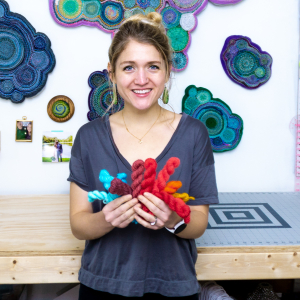
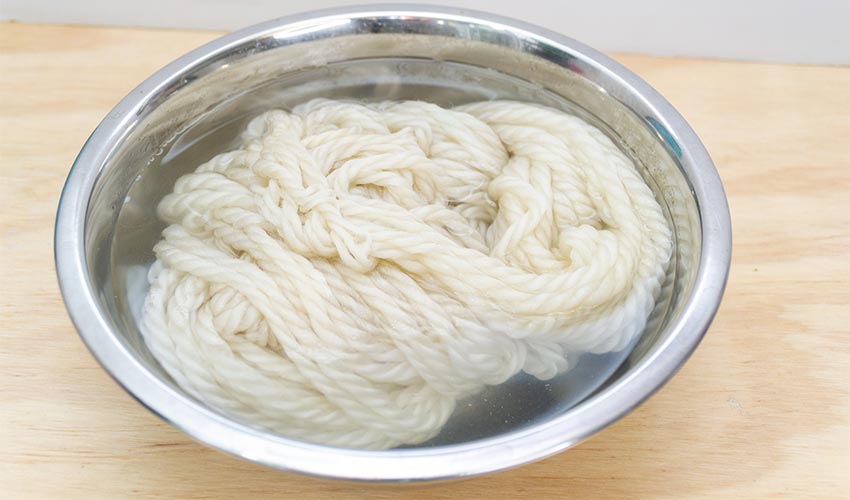
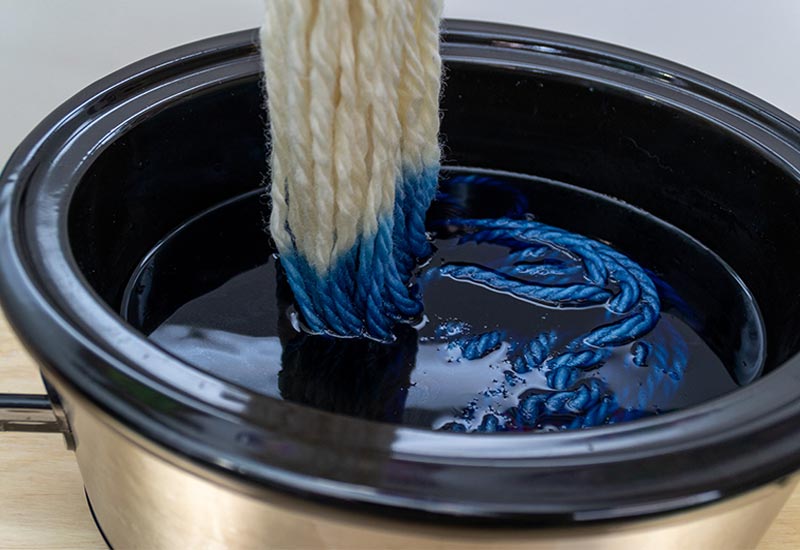
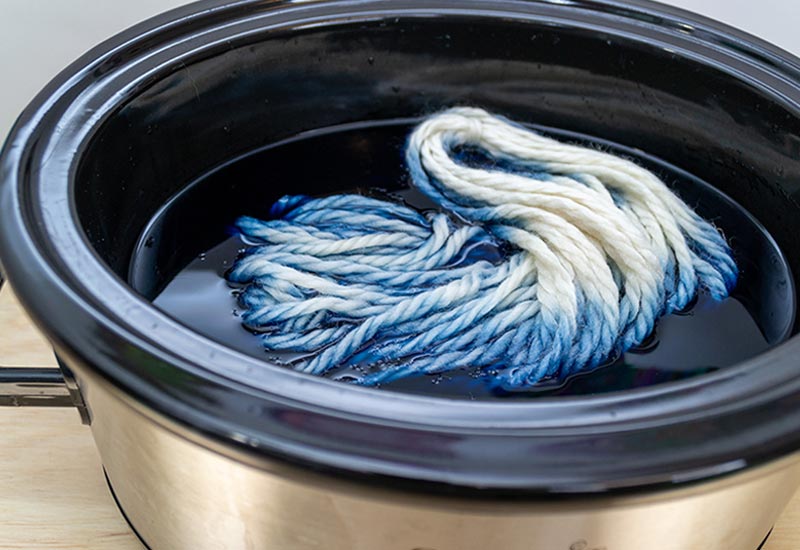
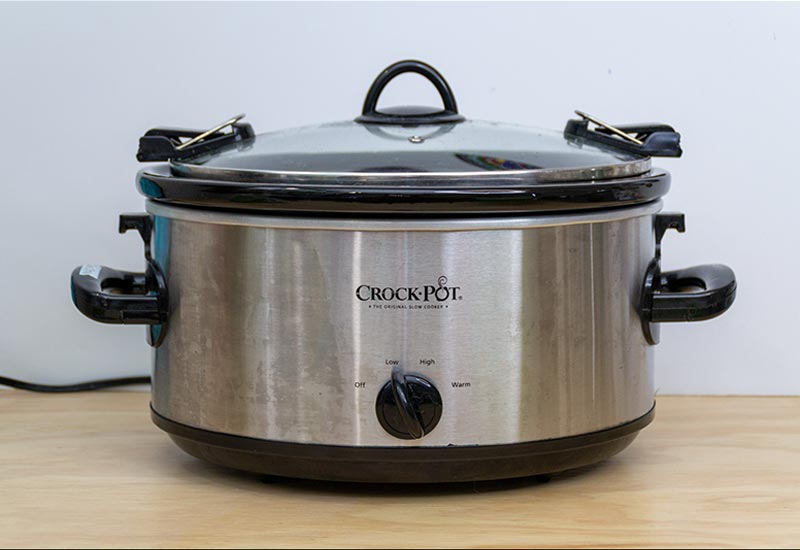
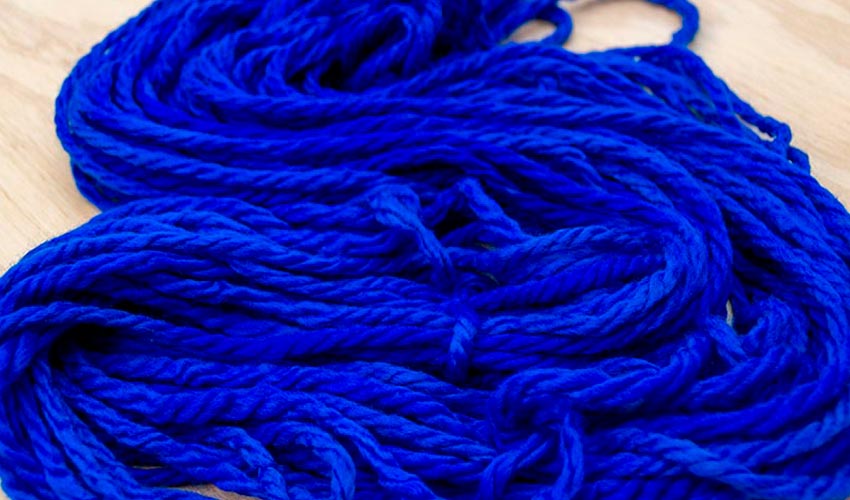






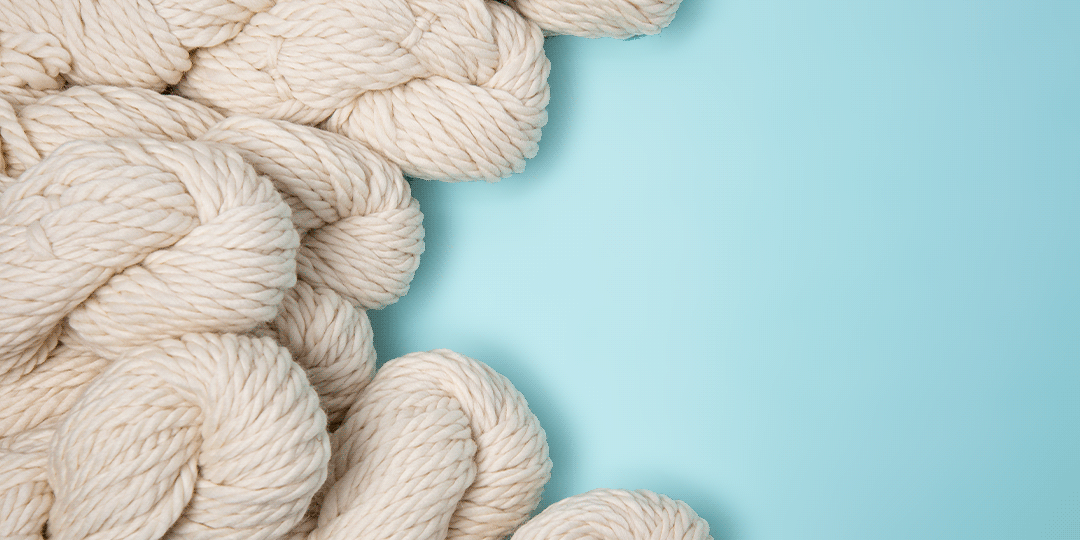

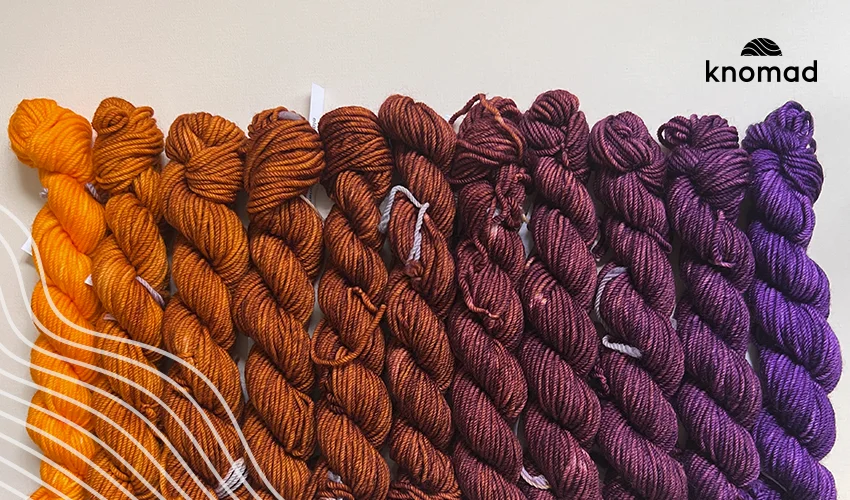
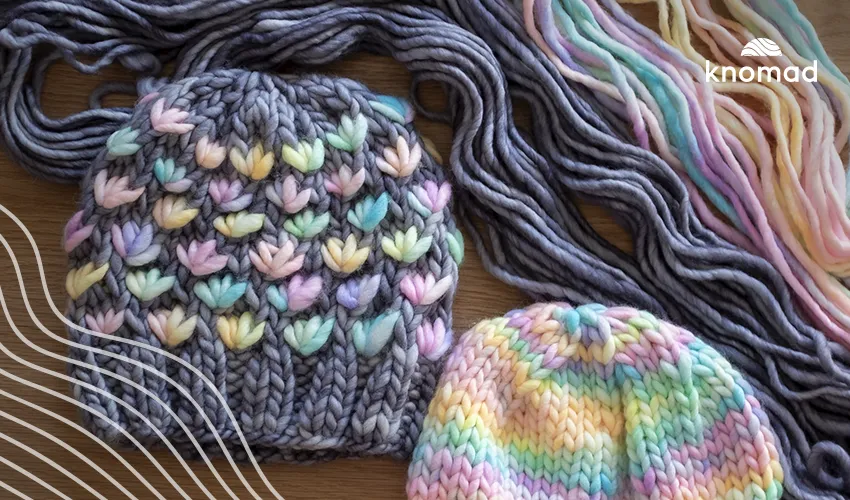
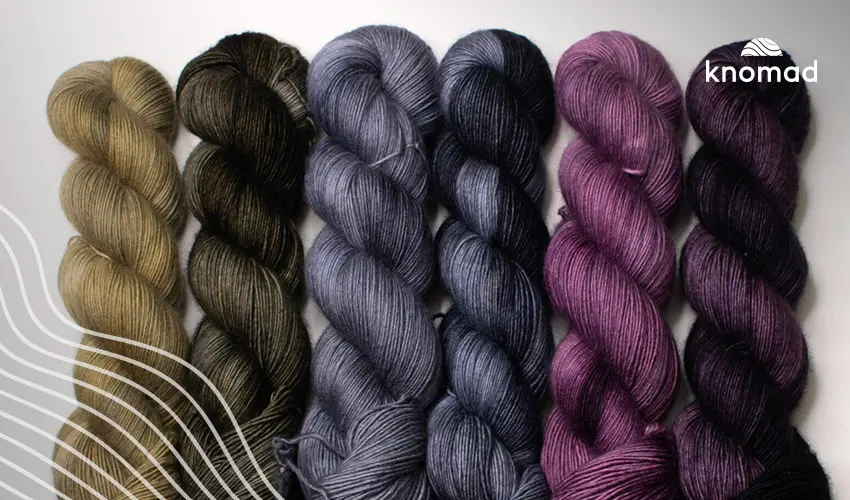
Thank you. It sounds like using a slow cooker (crock pot) to dye yarn is a way to avoid accidental boiling. Does this sound right?
I love using a slow cooker because it doesn’t get as hot but it isn’t a fool proof way to avoid boiling it is just much harder to boil the yarn accidentally with this method. If you left the slow cooker on high for several hours it definitely can still boil, but the risk is lower.
I love using my Nesco cooker to dye yarn. But a slow cooker sounds fun too!